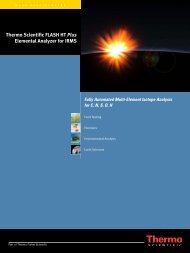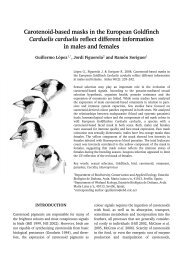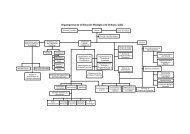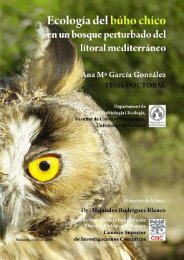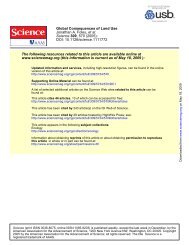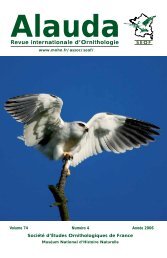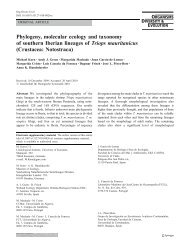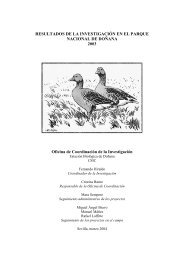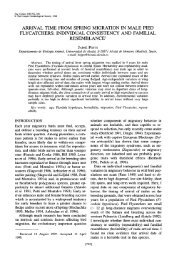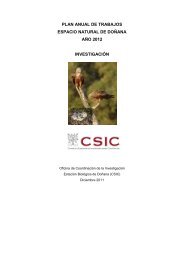Voucher Specimen Collection Preparation Identification and Storage ...
Voucher Specimen Collection Preparation Identification and Storage ...
Voucher Specimen Collection Preparation Identification and Storage ...
You also want an ePaper? Increase the reach of your titles
YUMPU automatically turns print PDFs into web optimized ePapers that Google loves.
4. Mammals<br />
4.1 <strong>Voucher</strong> Requirements<br />
• Generally, inventory projects only include the collection of mammals when it is<br />
necessary for identification purposes. After identification has been determined, the<br />
voucher may be prepared as a museum specimen for their permanent collection, stored in<br />
an unprepared state for a time, or discarded. This will depend on the species collected,<br />
the condition of the specimen after identification, <strong>and</strong> what material has already been<br />
collected <strong>and</strong> preserved at the museum, etc.<br />
• Whole specimens are not required for identification of species of large mammals. For<br />
small mammals <strong>and</strong> bats, particularly for the genera Sorex, Tamias <strong>and</strong> Myotis, whole<br />
specimens will likely be necessary for accurate identification. Contact the Royal BC<br />
Museum for specifics.<br />
• When whole specimens are collected for identification purposes or are needed for further<br />
analysis, natural history museums must first be canvassed to see what material has<br />
already been collected. If existing material is not available or adequate to meet the needs,<br />
advice on collecting should be sought from professionals.<br />
• When inventory methods involve trapping, the Royal BC Museum should be contacted to<br />
see whether they are interested in specimens from trap mortalities.<br />
• See Table 1 below for details regarding suggested vouchers for inventory groups (listed<br />
in the order found in the Components of British Columbia’s Biodiversity RIC manual<br />
series). If no voucher requirement is listed, then visual detection or identification from<br />
animal sign by qualified observers is considered adequate. When possible, photographs<br />
should be used to confirm observations.<br />
Table 2. Suggested vouchers for taxon-specific mammal inventories.<br />
Series # Mammals Suggested <strong>Voucher</strong>s<br />
20 Bats • wing punch or whole specimens for easily<br />
misidentified species when capture is part of<br />
the inventory protocol (e.g. Myotis lucifugus<br />
from M. yumanensis <strong>and</strong> distinguishing<br />
between long-eared bats: M. keenii, M. evotis,<br />
<strong>and</strong> M. septentrionalis)<br />
• morphometric data, photographs, digital<br />
sonograms or cassette tapes with reference<br />
calls should also be collected as evidence of<br />
rare or endangered bats<br />
21 Bears • hair <strong>and</strong> scat can be collected for<br />
mitochondrial DNA analysis to determine<br />
species in areas that both black <strong>and</strong> grizzly<br />
bears occur<br />
22 Beaver & Muskrat • whole specimens not necessary<br />
23 Hare & Cottontails • whole specimens only if trap mortalities occur<br />
June 9, 1999 19



